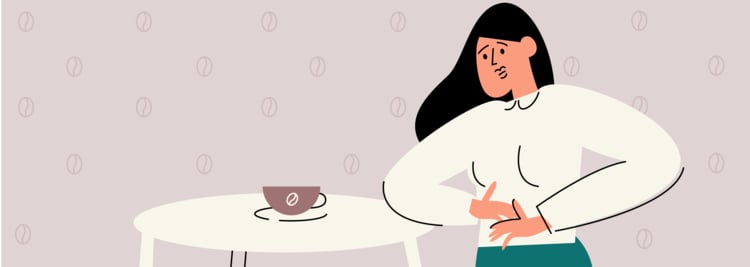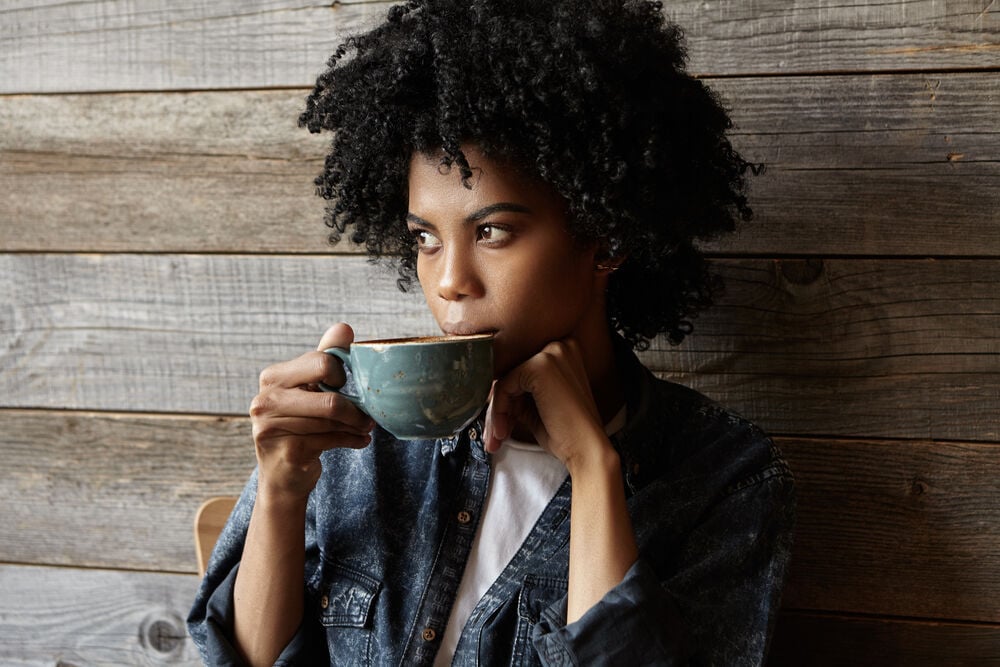Lots of people with diverticulitis have questions about their condition. For example, you may wonder if you’re able to eat your favorite foods or sip a latte. Read on to learn more about diverticulitis and drinking coffee.
-
Tracking cycle
-
Getting pregnant
-
Pregnancy
-
Help Center
-
Flo for Partners
-
Anonymous Mode
-
Flo app reviews
-
Flo Premium New
-
Secret Chats New
-
Symptom Checker New
-
Your cycle
-
Health 360°
-
Getting pregnant
-
Pregnancy
-
Being a mom
-
LGBTQ+
-
Quizzes
-
Ovulation calculator
-
hCG calculator
-
Pregnancy test calculator
-
Menstrual cycle calculator
-
Period calculator
-
Implantation calculator
-
Pregnancy weeks to months calculator
-
Pregnancy due date calculator
-
IVF and FET due date calculator
-
Due date calculator by ultrasound
-
Medical Affairs
-
Science & Research
-
Pass It On Project New
-
Privacy Portal
-
Press Center
-
Flo Accuracy
-
Careers
-
Contact Us
Diverticulitis and Drinking Coffee: What You Need to Know


Every piece of content at Flo Health adheres to the highest editorial standards for language, style, and medical accuracy. To learn what we do to deliver the best health and lifestyle insights to you, check out our content review principles.
What is diverticulitis?
Diverticular disease is a pair of conditions that affect the lower intestine. Diverticulosis refers to the formation of small pockets, called diverticula, along the inside lining of the large intestine. They’re most common in the lower part of the large intestine. These small pockets can be pea-sized or larger.
Diverticula are formed by pressure on the walls of the large intestine, especially in places where the intestinal wall is weakened. Pressure from excess gas, too much solid waste, and liquid in the intestine can press on the weakened spots and cause the formation of diverticula. Excessive straining during bowel movements can also lead to diverticula.
Diverticulitis is when one or more of the little pockets becomes infected and inflamed. The inflammation occurs when the pockets become packed with waste, which leads to infection from the buildup of bacteria.
Diverticulosis is a relatively common condition that affects about 10 percent of the Western population over age 40 and about 50 percent of those 60 and older. The rate increases with age, and while it can’t entirely be cured, the effects can be mitigated.
Symptoms of diverticulitis
One symptom of diverticulosis is rectal bleeding, which can be alarming for many people. This results from long-term injury to the smaller blood vessels in the bowel near the diverticula, which then rupture and bleed.
Symptoms include intense cramping and tenderness that can also occur when having a bowel movement. If the infection progresses, you may experience chills and fever. Further complications can include abscesses if the infection is left untreated and blockage of the bowels.
Treatment options for diverticulitis
Treating diverticulitis involves helping the inflamed or infected diverticula heal, then creating an environment to strengthen the bowels and reduce the further formation of diverticula. The diverticula that are already present may be there permanently unless they’re surgically removed. Treatment of diverticulitis may include taking antibiotics and following a different diet.
If there are several diverticula or if you have a persistent infection and a lot of inflammation, you may experience a perforation of your bowels. This is an emergency situation and needs immediate treatment to prevent sepsis (infection). You may need surgery to repair the perforation and may require a colostomy bag, which diverts the waste from the colon and lower bowels and allows them to heal.
Can you drink coffee with diverticulitis?

Coffee has a high amount of caffeine compared to other beverages like tea or soda. Caffeine is a stimulant and not only increases your alertness but also the contraction of your lower intestine and colon. That’s why many people feel the urge to poop after their first cup of coffee.
However, overstimulation of the bowels for those with diverticulitis can cause more pain. Coffee may also increase lower abdominal pain and worsen diarrhea. The bottom line is that diverticulitis and drinking coffee aren’t a great combination.
Who should avoid drinking coffee
Low-fiber diets combined with eating foods high in refined sugar and saturated fats can lead to a sluggish digestive system and the formation of diverticula.
If you have irregular bowel movements, chronic diarrhea, loose stools, or are obese, there’s a chance you may also have diverticula, which may not result in any symptoms until they’re inflamed or infected.
Very severe symptoms include dark or bloody stool, vomit, or bowel movements that look like coffee grounds. This can indicate internal bleeding and can be very serious or indicate an environment that can lead to sepsis.
Dietary tips for diverticulitis
The different prevalence of diverticulitis in different cultures may indicate that diet has something to do with the formation of diverticula. Foods high in fiber may have a positive impact on your overall bowel health, because fiber helps the lower gut move waste along more smoothly. Low dietary fiber results in smaller stools, which places more pressure on the colon. It has to contract harder to remove smaller stools than thicker, high-fiber-created stools.
However, high-fiber diets are best at preventing diverticulitis and keeping it from recurring after it’s healed. When you’re in the middle of a flare-up and under treatment for diverticulitis, your doctor might actually suggest a low-fiber diet of mild foods. Initially, you may be placed on a liquid diet and given a list of bland foods to eat. You’ll also be given a course of antibiotics and may be encouraged to stop drinking alcohol, coffee, and soda.
Foods high in a category of compounds called FODMAPs (fermentable oligosaccharides, disaccharides, monosaccharides, and polyols) should also be avoided. These include things like apples, pears, and plums, which are also fibrous foods; most dairy; fermented foods like kimchi and kombucha; and foods known for making people gassy, such as beans, cabbage, Brussels sprouts, onions, and garlic.
Coffee isn’t the only beverage that people with gastrointestinal illnesses should avoid. Alcohol can also negatively impact your digestive system, especially for people who drink more than one alcoholic beverage a day. It’s also a good idea to avoid sodas due to the carbonation, sugar, and caffeine. Some strong teas, especially black ones heavy in tannins, may also irritate your GI tract.
So, what can you eat? If you’re being treated for a flare-up or infection of diverticula, then you should follow the eating plan your doctor gave you. Once you’ve been cleared to resume eating more normally, you’ll be able to eat things that are healthy but easy on your bowels. Some of these may include:
- Canned fruits packed in water, without seeds or skins
- Canned vegetables with low fiber content such as green beans, skinless potatoes, or carrots
- Chicken, some fish, and eggs
- White bread
- Vegetable and fruit juices without pulp
- Cheese, yogurt, and whole milk
- Noodles without sauce and plain white rice
These foods are the opposite of a diet intended to prevent diverticulitis. However, using nutritional therapy to treat the condition and prevent a recurrence begins by allowing the diverticula to heal. These foods can soothe irritated bowels while still providing nutrition for your body.
The takeaway
The effects of drinking coffee if you have diverticulitis can be painful and aggravate a dangerous and painful condition. Diverticulitis can be treated, and with a proper diet, you may be able to reverse some of the effects. However, it can lead to very serious side effects. If you recognize unhealthy eating habits or if you have lower abdomen pain, difficulty passing stools, or chronic diarrhea, speak with your doctor immediately.
Take a quiz
Find out what you can do with our Health Assistant


Hey, I'm Anique
I started using Flo app to track my period and ovulation because we wanted to have a baby.


The Flo app helped me learn about my body and spot ovulation signs during our conception journey.


I vividly
remember the day
that we switched
Flo into
Pregnancy Mode — it was
such a special
moment.
Real stories, real results
Learn how the Flo app became an amazing cheerleader for us on our conception journey.




